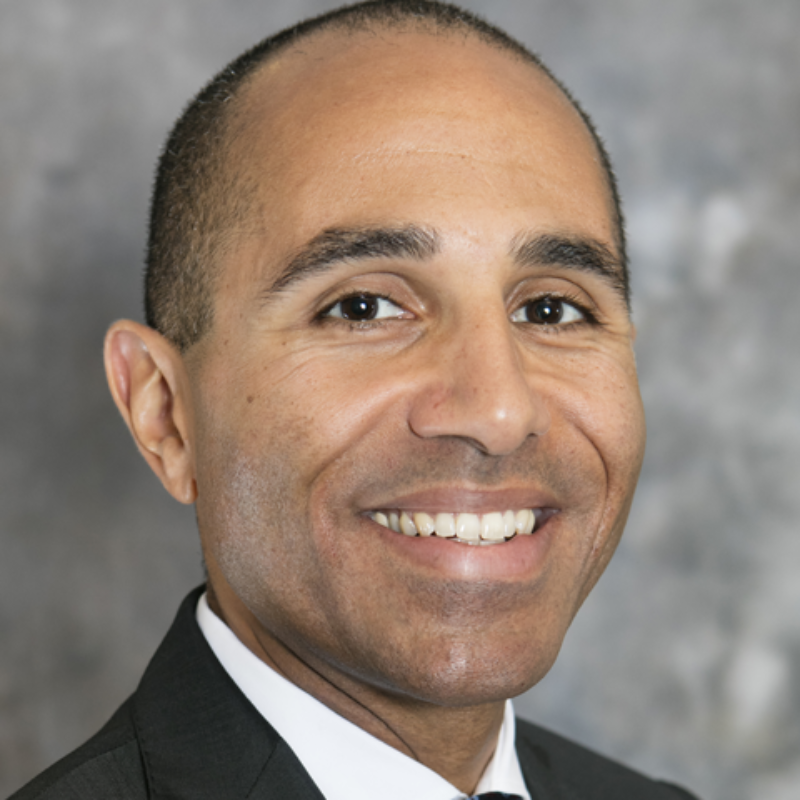Richard Tate
COVID-19, Race and the Road Ahead
This isn’t the 2020 any of us predicted. COVID-19 is wreaking havoc across our state, our country, and the world, taking lives and ruining economies. But what has been predictable is that, yet again, black and brown people are suffering the most in the midst of a crisis. But why? And what are we, collectively, going to do about it?
I know race is a major factor when it comes to health and wellness. The data on COVID-19 only reinforce this reality: Black people are more likely to contract COVID-19 and are dying at higher rates. People in the Latinx and Native American communities are also dying disproportionately from the virus. Asian people have been targeted for harassment and hate-based violence connected to COVID-19. And people of color who don’t lose their lives in the pandemic are more likely to lose their livelihoods. A report from Cal Wellness grant partner Race Counts – “How Race, Class, and Place Fuel a Pandemic” – shows how all of this is playing out in Los Angeles, the California city hit hardest by COVID-19.
But why are black and brown people suffering so much in this pandemic? It’s not just about race; it’s about racism. The major systems set up to help our society function – health care, education, banking and finance – have historically excluded or discriminated against people of color. As a result, economic opportunities for black and brown people are dismal, pushing many into low-wage jobs that have become high-risk, frontline positions in this pandemic: bagging groceries, driving buses, transporting patients, packing meat and picking fruit. It’s centuries of racist policies and practices, embedded in systems, that have helped COVID-19 devastate communities of color.
In the midst of all this, I’m grateful to be working at Cal Wellness, where we’re committed to investing our dollars and raising our voice to do all we can to meet the needs of this moment. Now is the time to look at racial disparities squarely and plainly. And the question emerging for many of us who care about wellness in California is not “how do we get back to normal?” It’s “how do we build better systems that support all people in our state?” and “where do we start?”
We can start by making sure people of color get the health care they need. As an example, we’re supporting Charles R. Drew University of Medicine and Science (CDU), which is marshalling its resources – staff, faculty, volunteers, money and time – to provide COVID-19 testing, outreach and education to low-income communities of color. CDU is also doing critical work in gathering data by conducting real-time research and analysis to better understand how COVID-19 is affecting these communities. We’re also supporting The Social Justice Learning Institute, which is addressing community needs arising from the COVID-19 pandemic and promoting the health and wellness of Latino and African American young men in Inglewood and South Los Angeles interested in pursuing health careers. We’re also grateful to our clinic partners — the community-based organizations providing health care to people of color, undocumented folks, and others who often have fewer options. To support the critical work of community clinics through the COVID-19 crisis, we’ve provided grants to every Regional Association of Clinics across the state and made a major investment in California Primary Care Association.
We can start by investing dollars with people of color. Several years ago, we committed $50 million to mission-related investments, using our endowment, not just our grantmaking dollars, to further our mission. The COVID-19 crisis has accelerated our goals to move even more of our endowment into this effort. A key strategy has been to diversify our asset managers, working with firms like Illumen Capital and Ariel Investments that are owned and operated by people of color. We’ve also made program-related investments in small business like Everytable and community development financial institutions like Rural Community Assistance Corporation, organizations investing in and providing capital to communities of color.
We can start by raising our voices. For me, as a person of color, witnessing the ways in which this pandemic is destroying the health and wellness of black and brown people is infuriating and heartbreaking. I know my voice is just one among many who are trying to make sense of the COVID-19 crisis, the persistent racial inequities that plague us, and what this pandemic means for our future. But now is the time for all of us – through whatever platform or pulpit available to us, inside and outside our organizations – to speak out against racial injustice and commit to working for change. We can find inspiration and perspective from others – from leaders at the Libra Foundation, PolicyLink, here at Cal Wellness and so many others. We can see that we are not alone.
As we travel the road ahead, there is still so much uncertainty about when and how we’ll emerge from this pandemic. But there will be a time when COVID-19 is behind us. Right now, even as we grieve and respond and do what we can to adapt, my hope is that we will seize this moment to advance an agenda with racial equity and social justice front and center.

Richard Tate leads a multidisciplinary team responsible for the foundation’s communications, community relations and public policy activities.
